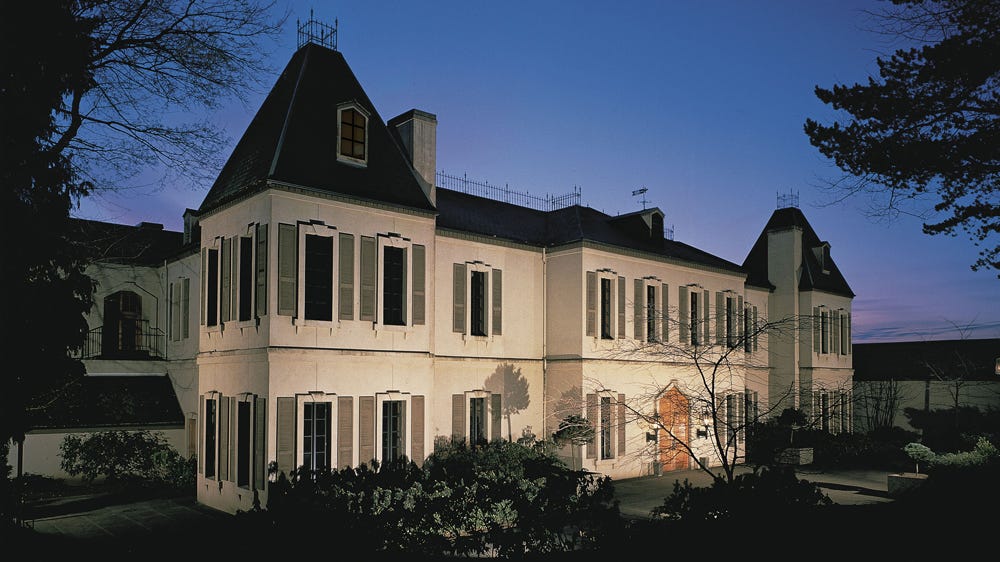🗓️ Day 19 - West coast USA, the passito method & the 3rd drop 🎁
That helps you become a taster 👌
Good morning! We start today’s entry with a pre-recorded webinar by trusted educators Erica Dent of Enjoy Discovering Wine and Jim Gore of Global Wine Academy.
You may know Erica and Jim already from word of mouth. Or you may remember from the last run, where the duo kindly showed us how to structure the answer to a mock question on Geelong premium Chardonnay.
For this run, I want to share with you what Erica and Jim are most known for — their exceptional coaching on tasting 🍷
What’s in this hour-long video
Why and how to study for D3 tasting exams (01:01 - 09:53)
Variety flight - Pinot Noir (09:54 - 19:31)
Defining characteristics: pale colour, red fruit flavours, refreshing acidity
Highlighted potential pitfalls in identification
No Burgundy Pinot Noir included, adding challenge
Country Flight Analysis (19:31 - 40:07)
Wine 4: Neutral white wine (Gavi)
Wine 5: Pale red, fragrant (Barolo)
Wine 6: Deep, powerful red (Aglianico)
Strategies for identifying region in exam context
Region Flight Analysis (40:07 - 49:02)
First time Languedoc included as a region in exam
Discussed challenges in identifying Languedoc wines
Importance of building confidence with easier identifications
Mix Bag Flight Analysis (49:03 - 57:52)
Wine 10: Likely Sauvignon Blanc, high alcohol (14%)
Wine 11: Challenging to identify, possibly Chenin or Silvaner
Wine 12: Sweet wine, clear Botrytis influence
Exam Strategies and Final Thoughts (57:52 - 01:06:12)
How to approach to difficult wines in exam context
Why we need to focus on the finish and quality for challenging wines
The logic behind exam wine selection: mixing easier and more difficult identifications
Go back to your Level 3 classics
If you enjoy Erica and Jim’s teaching style and want to train your palate with them, you can explore their in-person sessions in the UK in April.
If you’re based in the EU, here is a online version of this tasting course. You will receive 18 x 50ml samples, dispatched to your home in mid-March. Sign up now before the delivery deadline.
Jim has kindly offered a discount code on all his tasting courses for our subscribers— KELLY10% — for 10% discount.
I don’t receive any kickback 💯 I’m recommending Jim and Erica’s course because some of my friends said the duo got them through their D3, especially for tasting 👀👃👅
💪 Warm up time
Here are some general statements about producing wine using the passito method. Some of them might lack factual accuracy.
For optimal appassimento, grapes are typically harvested at 11-11.5% potential alcohol to maintain acidity.
During the appassimento process, humidity control is unimportant as long as temperature is regulated.
In volume production, grape bunches for appassimento must be stacked at least two layers deep in trays to maximise efficiency.
The chemical changes during appassimento include increased glycerol production, which contributes to a softer, fuller mouthfeel.
The answer to this warm up question is at the end of today’s entry.
⏳ Past exam question
Question four from the February 2022 exam
Compare the wine industries of Washington and Oregon with reference to:
a) Climate
b) Soils
c) Grape Varieties
d) Trade Structure
Each section carries equal weighting.

💡 Examiner’s report
© Wine & Spirit Education Trust
This was an unpopular question, but those who chose to attempt it had a good level of knowledge in general on this topic and were clearly confident in their choice of question. A few attempted this
question with only a basic understanding and their answers lacked the necessary depth required at this level to pass.
The first three sections were handled well with most noting the differences in climate and linking this to the choice of varieties that are typically grown in each region. The Trade Structure was the least well-handled and a number of candidates wrote at length about the three-tier structure and the Volstead Act, which was irrelevant. Trade Structure needed a comparison of the two regions, and the key to answering this effectively was by highlighting the differences in the scales of production, different ownership models and the different routes to market. For example, the industry in Washington is dominated by the enormous Ste. Michelle Wine Estates, responsible for half the state’s production, whereas in Oregon, the wine industry is typically made up of small producers. In fact, 75% of producers are family owned, and sell fewer than 5,000 cases per year.
Grape Varieties seemed to be the most straightforward section with most answers covering the key varieties found in these regions. The better candidates were able to go into considerable depth and illustrate their answers by referring to the important AVAs within these two states.
🥁 Answer to today’s warm up question
✔️ For optimal appassimento, grapes are typically harvested at 11-11.5% potential alcohol to maintain acidity.
❌ During the appassimento process, humidity control is
unimportant as longjust as important as temperature is regulated.❌ In volume production, grape bunches for appassimento must be stacked
at leasttwo layers deepstrictly no more than one bunch deep in trays tomaximise efficiencyprevent moulds.✔️ The chemical changes during appassimento include increased glycerol production, which contributes to a softer, fuller mouthfeel.
Textbook references
WSET Diploma in Wine D3 textbook p250
That’s it for today. Have a restful Sunday 🌱











very useful tasting video, and the recently exam paper, thank you Kelly